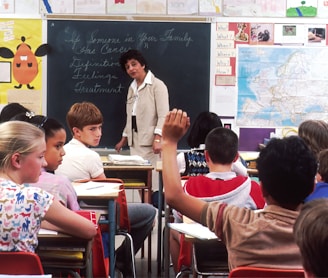SAFE AND UNSAFE TOUCH
a brief discussion about practical ways to inform our kids about touch, body awareness, and trust.
Tabatha Crockett
7/24/20232 min read


Empowering Young Minds: Teaching Kids about Safe TOUCH !!!
In a world where children's safety is paramount, it's crucial to equip them with the knowledge and awareness to recognize inappropriate touching. As parents, guardians, educators, and caregivers, it's our responsibility to encourage young minds to protect themselves and understand their boundaries. This blog post aims to provide practical tips and guidance on how to initiate conversations with our kids about safe and unsafe touches, ensuring their emotional and physical well-being.
Begin with Open Communication: Open dialogue is the building block of trust with children. Create a safe and non-judgmental space where they feel comfortable expressing their thoughts and feelings. Encourage questions and actively listen to their concerns, making it easier for them to discuss difficult topics.
Teach Body Autonomy: Educate children that their bodies belong to them and they have the right to decide who can touch them and when.
Use Age-Appropriate Language: Tailor discussions to the child's age and comprehension level. Use simple, language to explain the concept of safe and unsafe touches without causing fear or confusion.
Identify Trusted Adults: Emphasize the importance of identifying trusted adults who children can approach if they ever feel uncomfortable or face a situation they don't understand. Reassure them that these trusted adults will listen and support them.
Set a Positive Example: Model healthy boundaries and respectful behavior in your interactions with children. Show them how to respect others' personal space in daily activities.
Role-Playing Scenarios: Engage in role-playing scenarios to help children understand different situations. This interactive approach can empower them to react appropriately if they feel danger.
Empower Children to Say "No": Teach children that it's okay to say "no" if they don't want to be touched. Let them know they have the right to protect their personal space.
Recognize Warning Signs: Educate children about warning signs of unsafe situations, such as secret-keeping, forced touching, or threats. Encourage them to trust their instincts and seek help if they feel uncomfortable.
Encourage Reporting: Explain the importance of reporting any inappropriate encounters to a trusted adult immediately. Assure children that they won't be blamed or punished for speaking up.
Repeat the Message: Revisit the topic regularly to reinforce the message. Encourage open communication and remind children that you are always available to discuss any concerns they might have.
By educating children about safe and unsafe touches, we equip them with a powerful tool to protect themselves and stay safe. Open communication, age-appropriate language, and fostering a sense of body boundaries are essential aspects of this process. Together, we can create a safe and nurturing environment that empowers young minds to confidently navigate the world while being aware of their boundaries. Let's stand united in safeguarding the well-being of our precious children.

